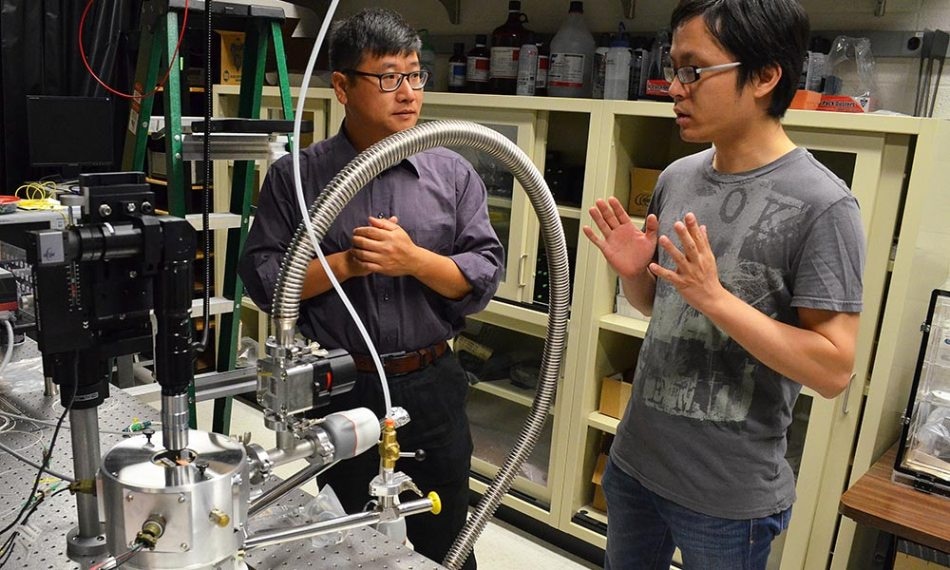Aug 15 2016
 Qiang Lin, at left, assistant professor of electrical and computer engineering, and PhD student Wei Jiang, worked with researchers at the University of Victoria to show how the "optical spring" effect could enhance the detection of single particles and molecules. (University of Rochester)
Qiang Lin, at left, assistant professor of electrical and computer engineering, and PhD student Wei Jiang, worked with researchers at the University of Victoria to show how the "optical spring" effect could enhance the detection of single particles and molecules. (University of Rochester)
Engineering researchers have developed a new method to identify single molecules or particles using a unique optical technology. This technology employs a spring force, which is created by a circulating light within a micro-resonator.
The study, performed by researchers from the University of Victoria and the University of Rochester, has been reported in Nature Communications.
The unique optical technology has many promising applications, such as security screening, drug development, medical diagnostics, and environmental science.
The force created by the circulating light makes the tiny resonator shake in a periodic manner. When a biomolecule or particle falls on this vibrating resonator, the supposed “optical spring” effect modifies the vibration in a specific manner, which in turn improves the detection of molecules and particles.
This is the first time the sensing capability of the optical spring force has been realized, although the optical spring effect has been known for more than a decade.
Wei Jiang, Doctoral Student, University of Rochester
Assistant professor Tao Lu at Victoria, doctoral student Wenyan Lu, and Qiang Lin, assistant professor of electrical and computer engineering at Rochester were also part of the study.
The researchers used a whispering gallery micro-resonator - an optical resonator - for their study. This resonator was inspired by the “whispering gallery” effect that was initially found in London’s St. Paul’s Cathedral, where a voice murmured against one wall reverberates around the circular rim of the chamber and can be distinctly heard beyond 40 m away on the other side.
The researchers’ miniaturized resonator uses light instead of sound, and measures just 100 µm in diameter - about the width of a single strand of human hair.
“The ability to detect a single molecule or nanoparticle is essential for many applications,” note Yu and Lu. “To date, many approaches have been used to observe single particles. Our discovery may allow scientists to detect particles as minuscule as a single atom, or a single base pair of DNA.”
The sensing principle is so universal that it can be applied to many sensing applications beyond molecule sensing itself, such as inertial sensing, electromagnetic field sensing, gas sensing, etc., that we are going to explore in the near future. We proved the sensing principle in a whispering gallery resonator. The next step is to transfer our technology to a more practical and fully integrated chip-scale device platform that could be used in our daily lives in the future. This technological development will be well in line with AIM Photonics.
Qiang Lin, Assistant Professor, University of Rochester
Last year, it was announced that the American Institute for Manufacturing Integrated Photonics (AIM Photonics), will be headquartered in Rochester, and will combine the country’s leading talent from universities, companies, and federal research institutions under a single entity to design advanced integrated photonics.
The National Science Foundation, the National Sciences and Engineering Research Council of Canada, and the Defense Advanced Research Projects Agency have funded the study.